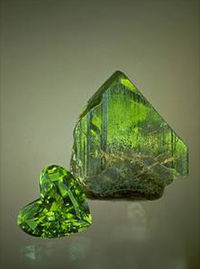Isomorphism (crystallography)

Imagine you have two big jigsaw puzzles, each with lots of pieces that look very similar. These puzzles represent two different crystals. When you finish putting together one puzzle, you notice that it looks exactly like the other puzzle you haven't finished yet. This is like isomorphism in crystallography.
In crystallography, scientists study crystals, which are structures made up of tiny, repeating shapes called "unit cells." Sometimes, two different crystals might have the same unit cell shape, but arranged slightly differently. Just like the two jigsaw puzzles, these crystals are said to be isomorphic to each other.
Scientists use X-ray crystallography to study crystals and determine their structure. By comparing the X-ray diffraction patterns of two crystals, they can determine if the crystals are isomorphic or not. Knowing which crystals are isomorphic can help scientists predict the properties and behavior of new materials.
In crystallography, scientists study crystals, which are structures made up of tiny, repeating shapes called "unit cells." Sometimes, two different crystals might have the same unit cell shape, but arranged slightly differently. Just like the two jigsaw puzzles, these crystals are said to be isomorphic to each other.
Scientists use X-ray crystallography to study crystals and determine their structure. By comparing the X-ray diffraction patterns of two crystals, they can determine if the crystals are isomorphic or not. Knowing which crystals are isomorphic can help scientists predict the properties and behavior of new materials.
Related topics others have asked about:
